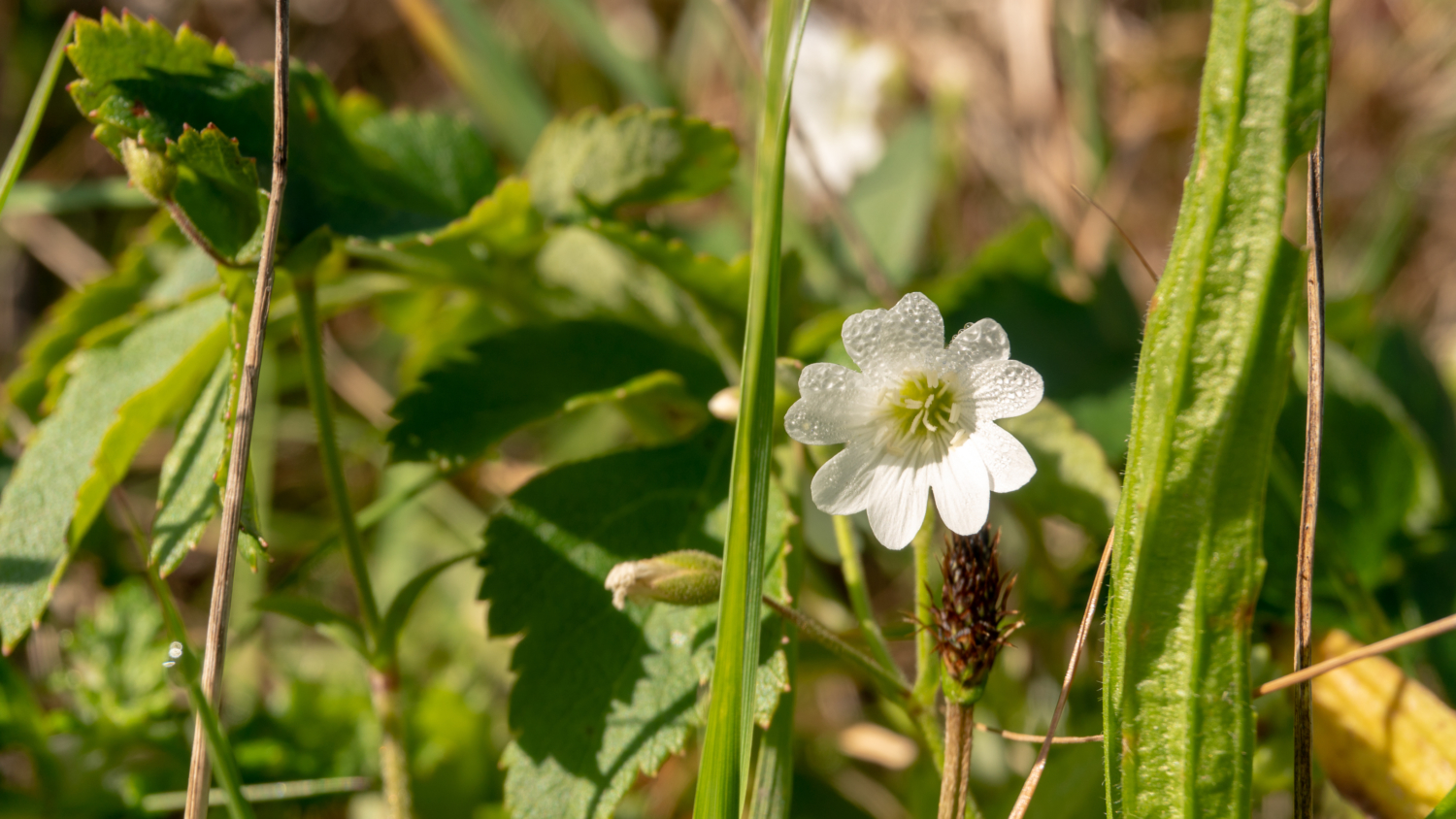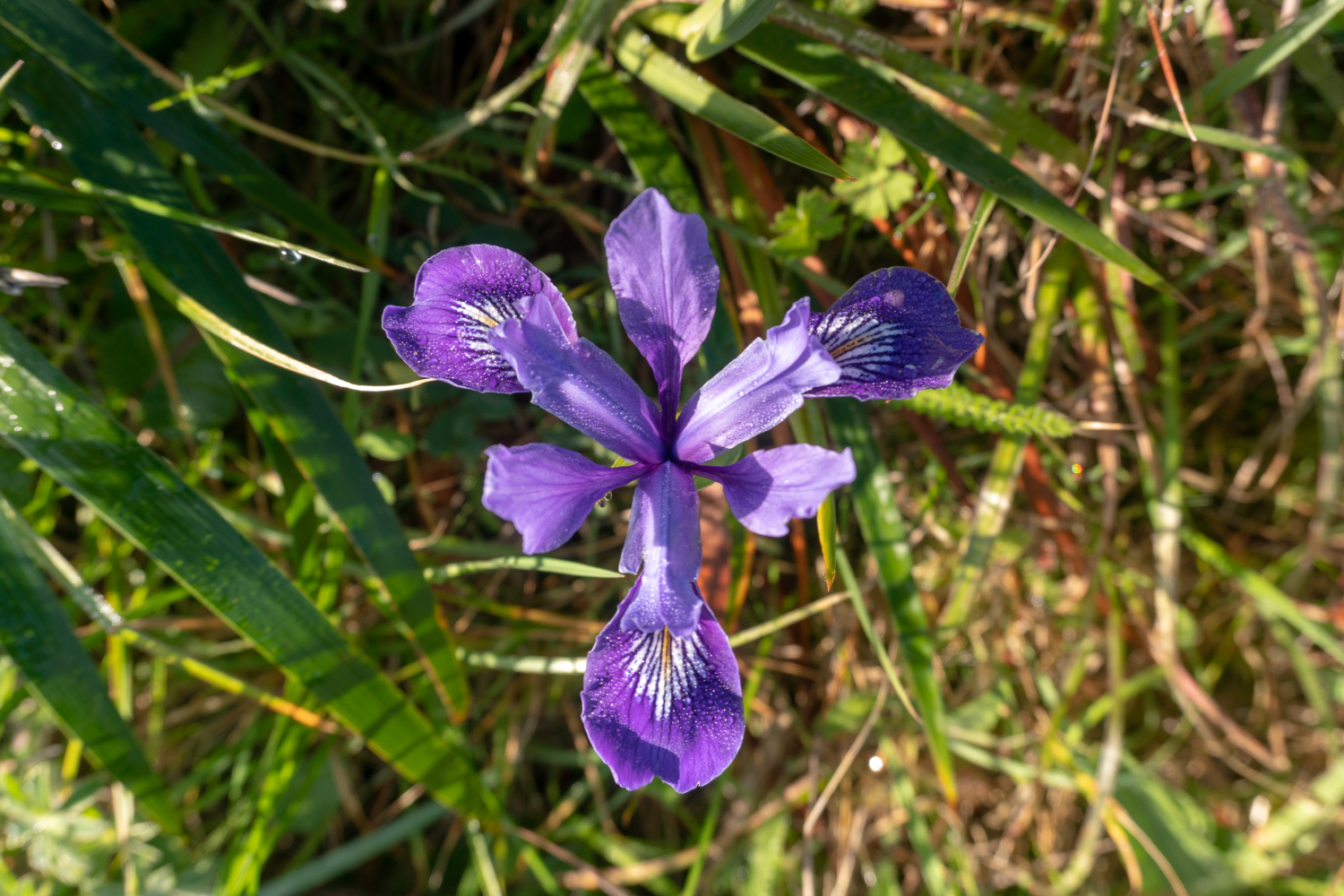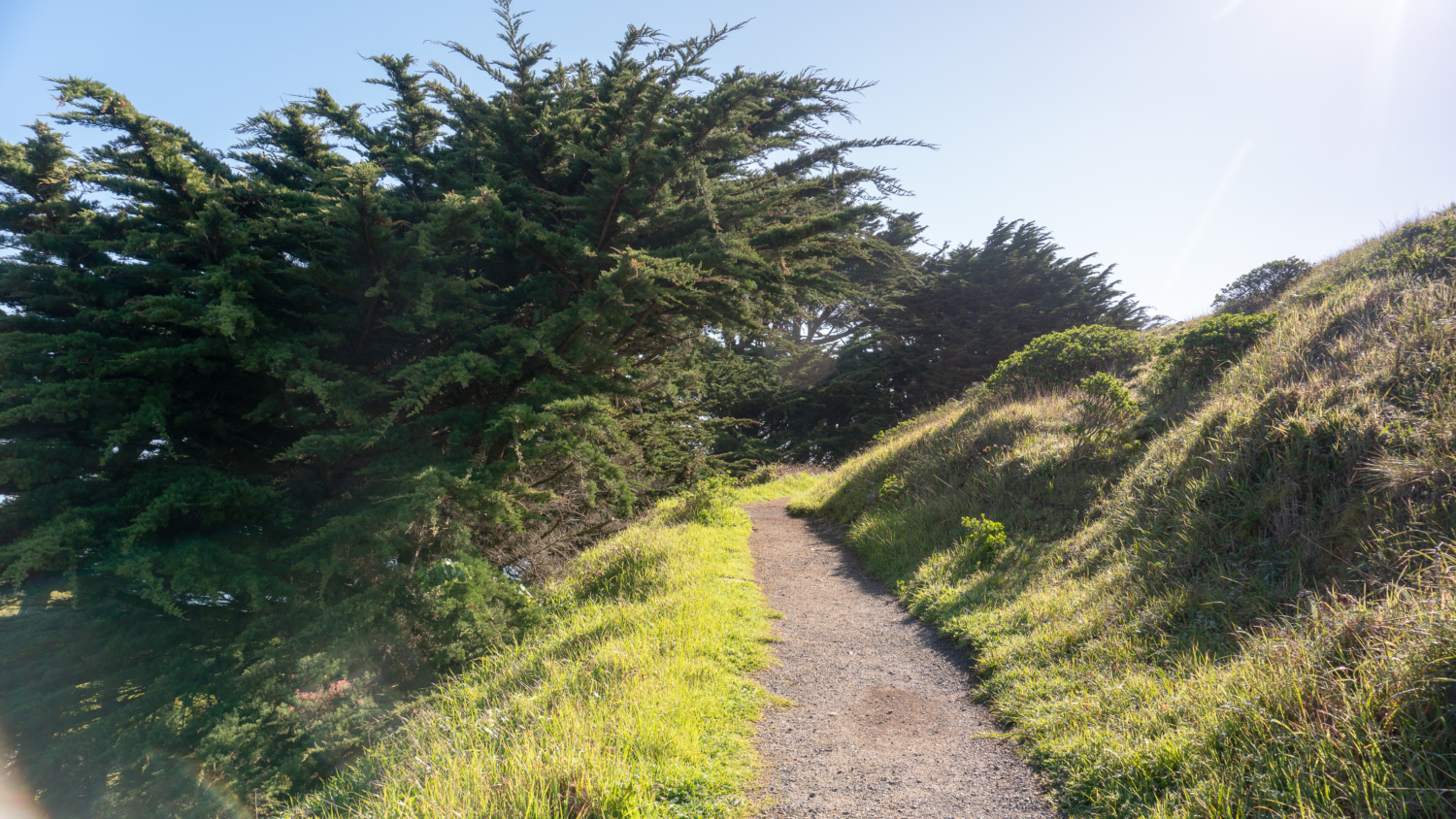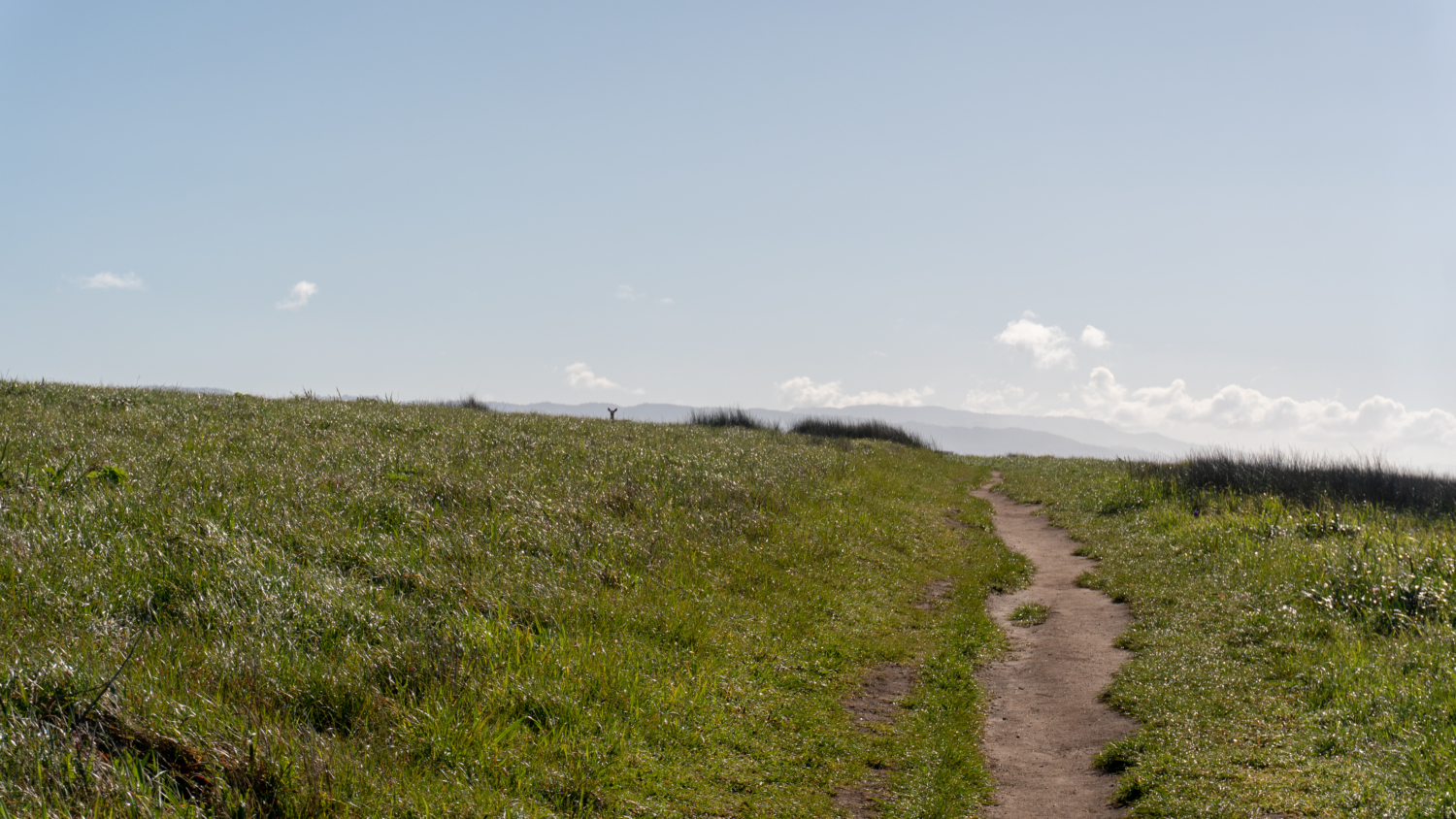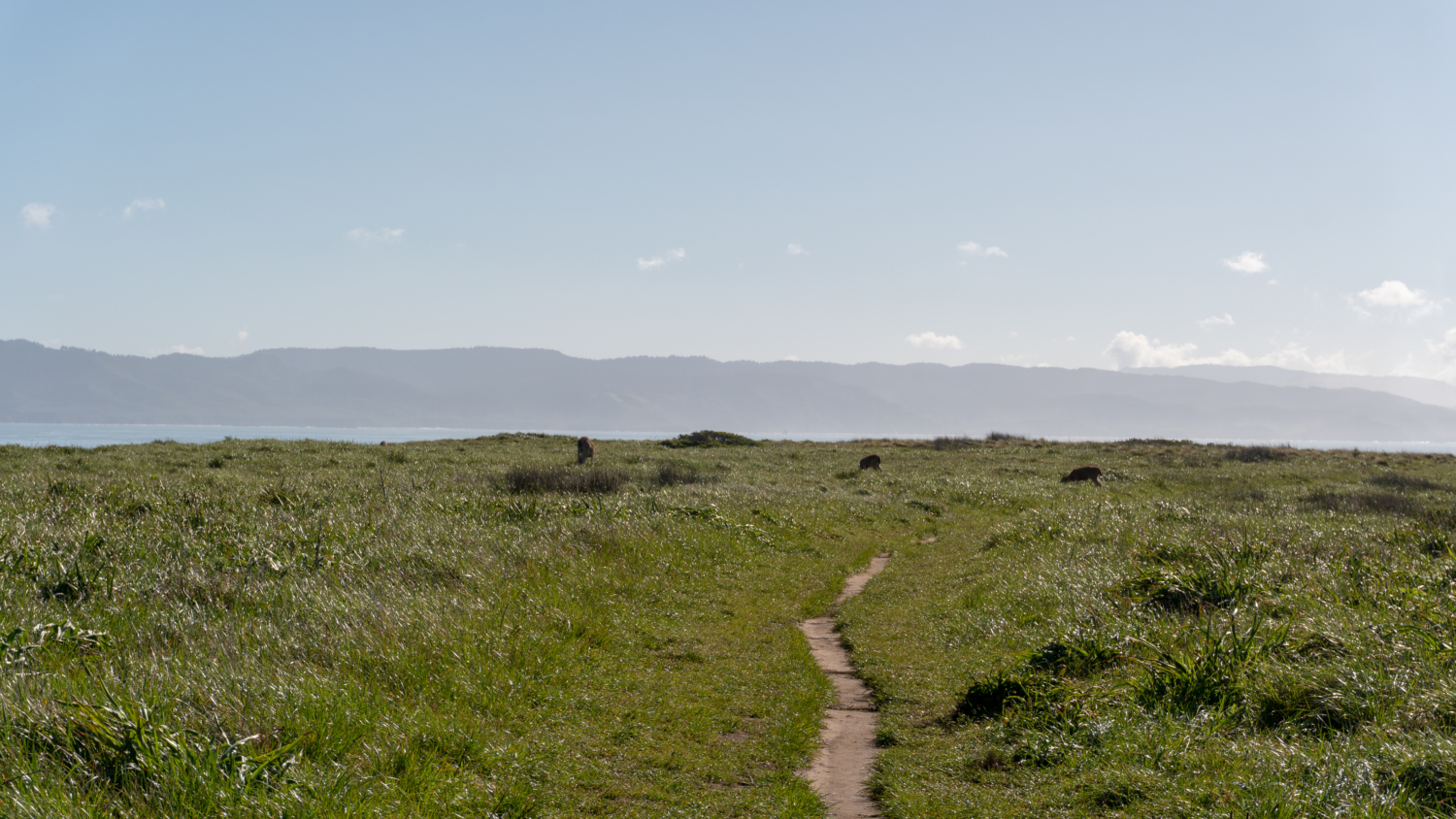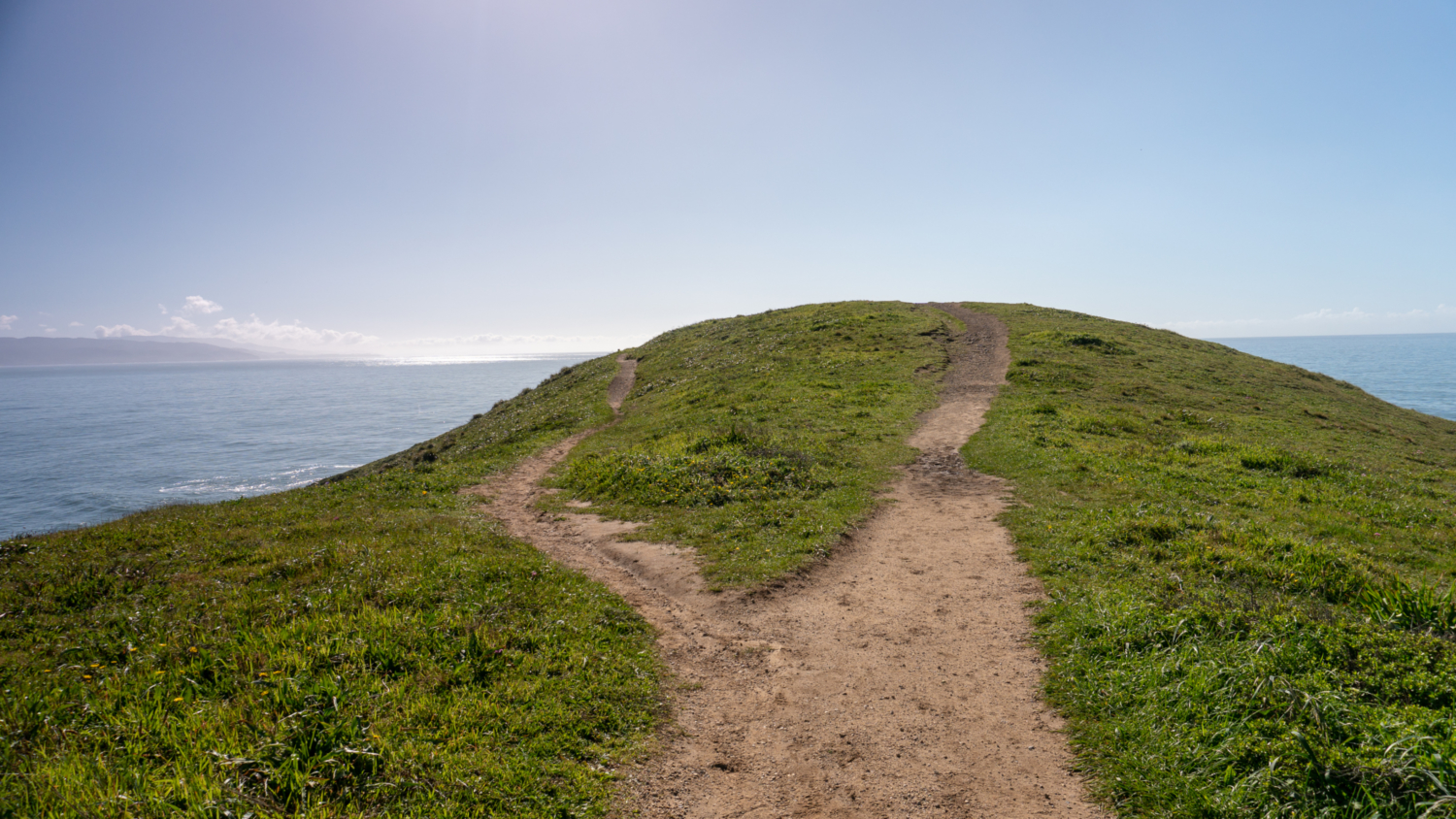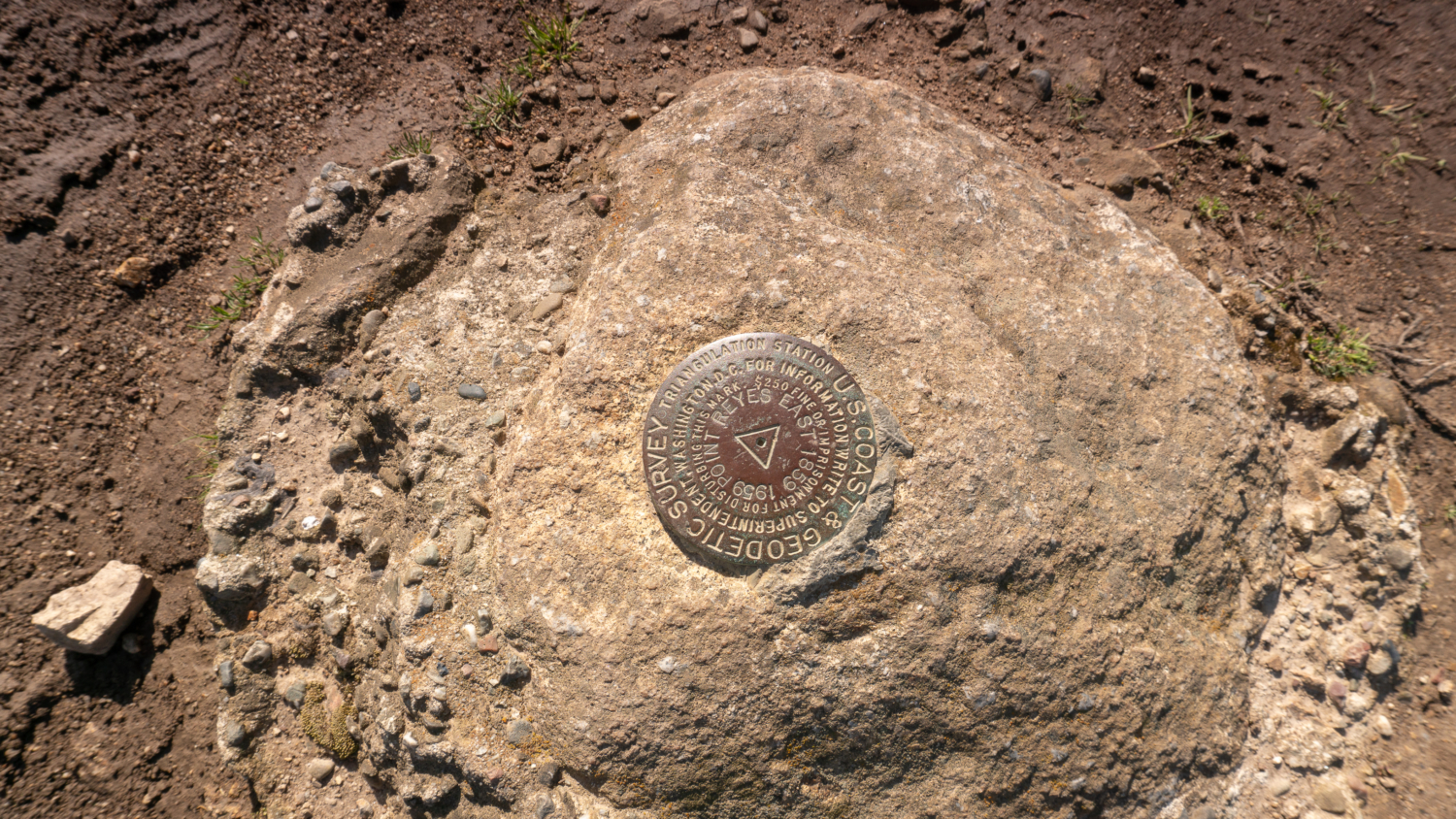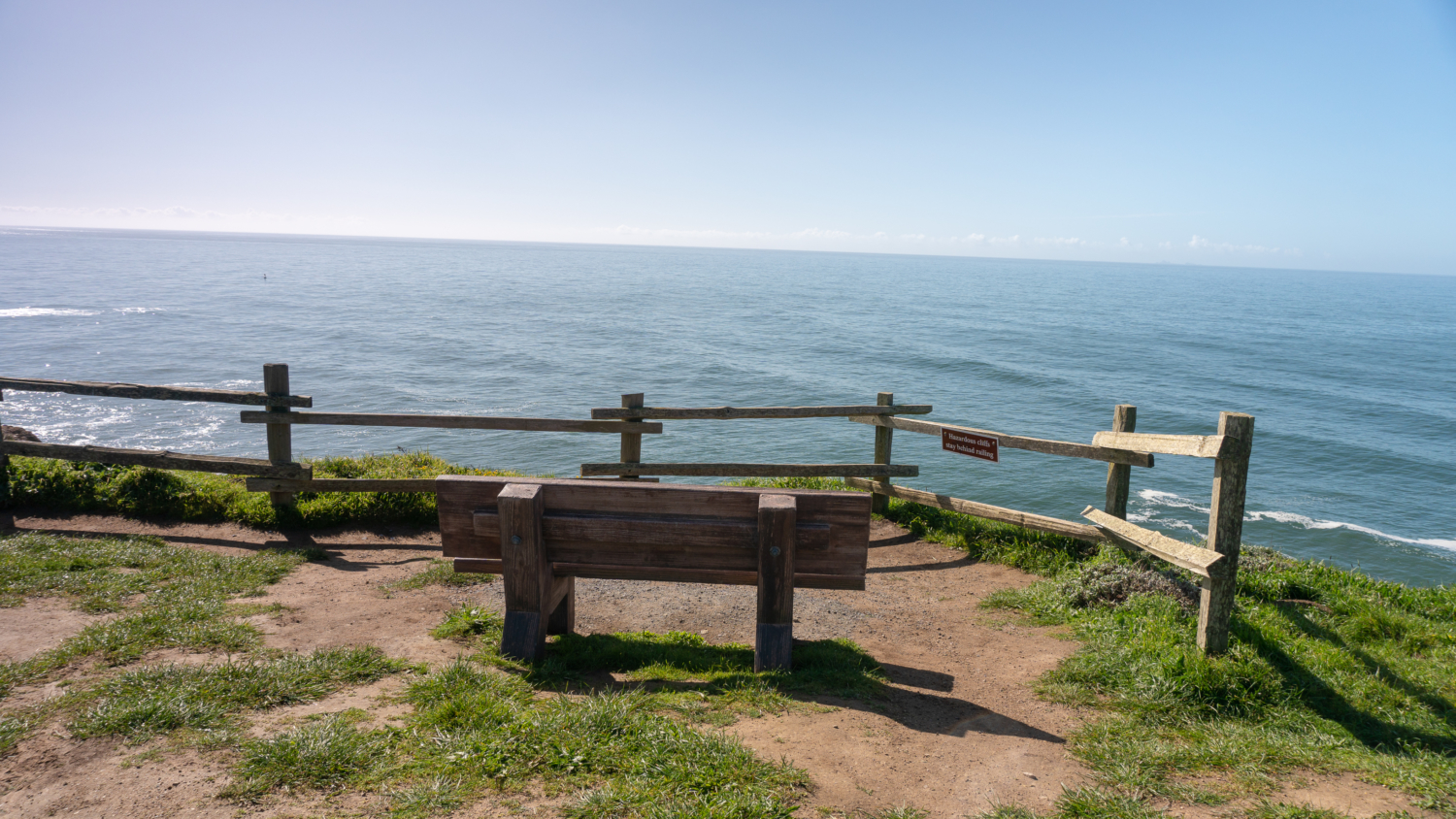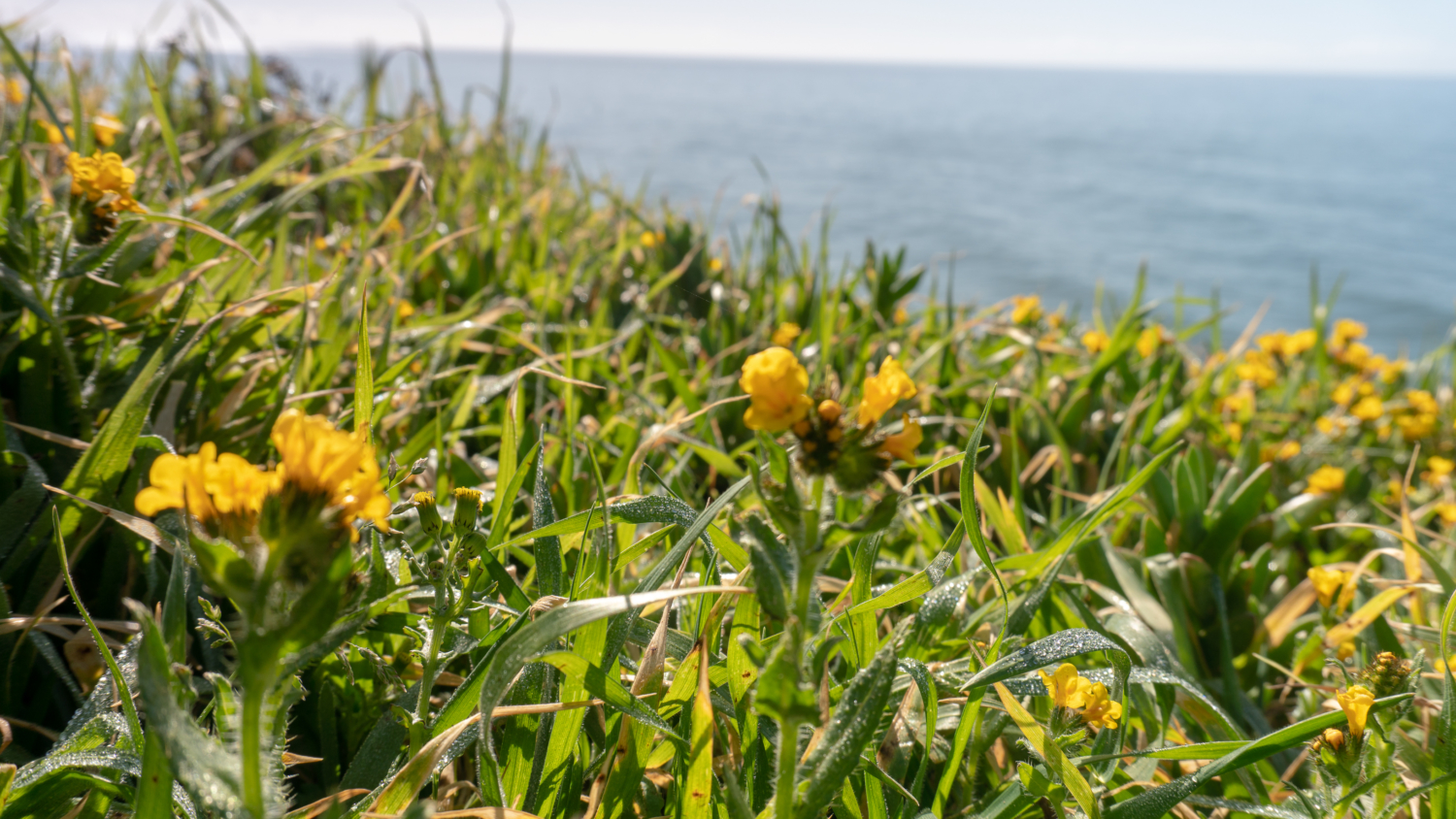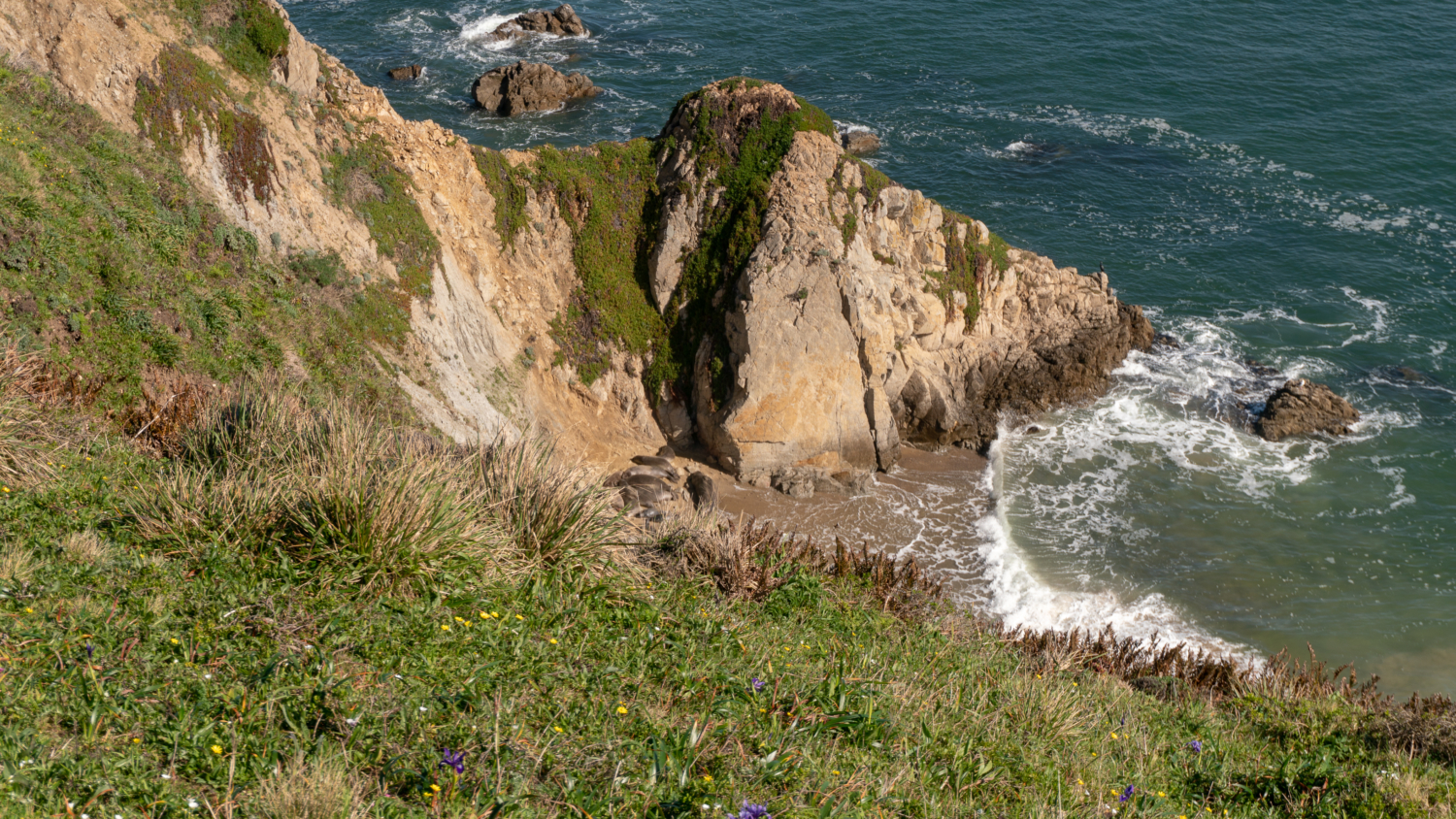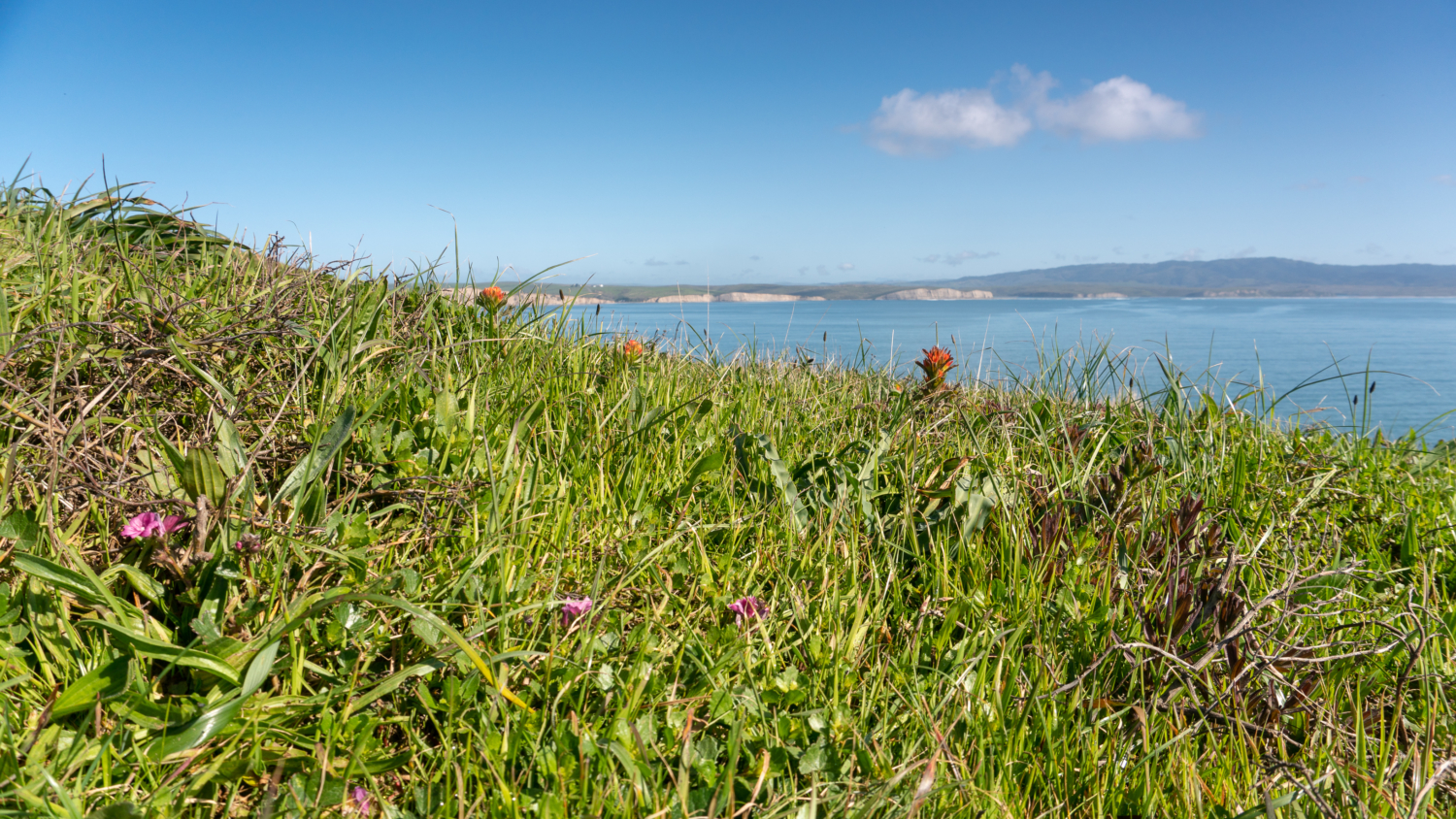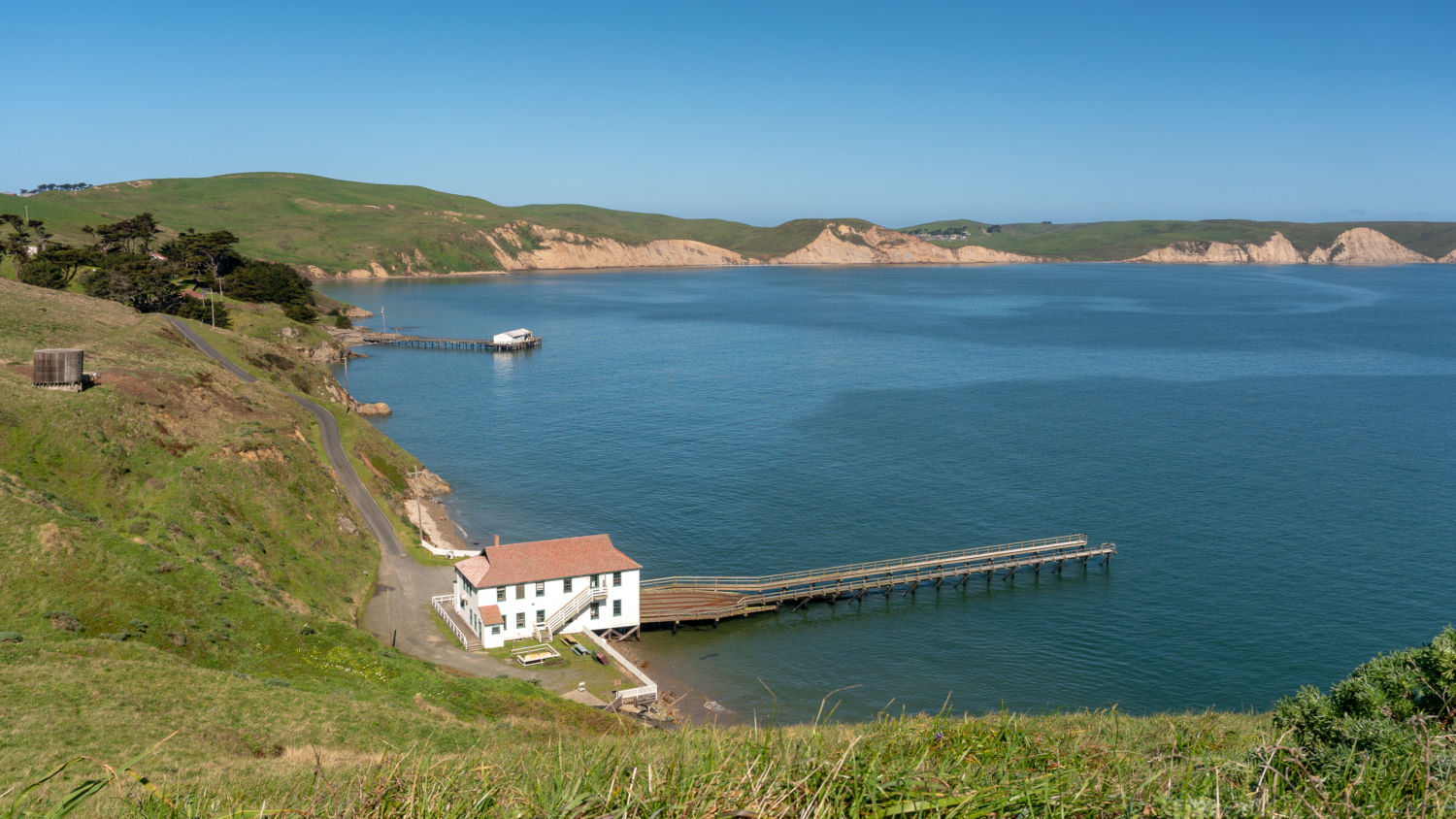The Chimney Rock Trail traces a southeastern line through blustery coastal grasslands and sheer rock cliffs to the edge of the Point Reyes Headlands. Elephant seals nap, mate, and nurse their young on Drake’s Beach in winter, while springtime reveals painted carpets of wildflowers. If you do make a run for the spring wildflowers on the weekend, an early morning start is a good bet: The hike’s popularity can lead rangers to meter traffic on narrow Chimney Rock Road on weekends.

The small parking lot at the end of Chimney Rock Road holds about 20 vehicles. The park service typically closes Sir Francis Drake Boulevard five miles north of the Chimney Rock trailhead at the South Beach junction on winter weekends to manage traffic congestion, since it is a popular time of year to see elephant seals and gray whales. Shuttle buses (fee applies) run between Drakes Beach parking lot, the Chimney Rock Trailhead, and Point Reyes Lighthouse. The park service cancelled the shuttle in the 2018-2019 winter season, but could re-institute it in the future. Check the Seashore’s Winter Shuttle Bus System page for up-to-date information, or just give them a call.

This short hike begins with a visit to Elephant Seal Overlook and then heads out to the edge of the Chimney Rock Peninsula. Starting from the parking lot, head down the driveway towards Drakes Bay and in 300 feet, bear left at a Y-junction toward the Elephant Seal Overlook. A gravel path runs for a quarter mile along the edge of the cliff strewn with buttercups, checkermallow, Douglas iris, checker lily, and lupine in spring. The occasional cypress leans over the trail, but for the most part, it is just you, the fresh air, and the sandstone cliffs above Drakes Beach. Wildlife docents are typically stationed at Elephant Seal Overlook on winter weekends to answer your questions and help you spot the seals.

The Drakes Beach Colony of elephant seals returns each winter to give birth, nurse their pups, and breed. Males aggressively compete with each other for dominance, and females spend about a month nursing, defending, and weaning their pups. Between the mid 1800’s and the early 1900’s, hunters killed elephant seals for their blubber, the thick layer of fat underneath their skin used for oil. Hunting decimated their population, leading experts to believe that fewer than 100 elephant seals existed at the turn of the 20th Century. To save the species, the Mexican government banned elephant seal hunting in 1922, followed by the U.S. government. Since then, with careful monitoring and protection, the seals’ population has grown to over 150,000 elephant seals worldwide, a successful example of a species’ re-population. And we get to see them at Drakes Beach, among other places between Mexico and Alaska in the North Pacific Ocean.

Northern elephant seals’ (Mirounga angustirotris) common name is a nod to the male’s elephant-like snout, called a proboscis, and their thick chest shields, which carry the scars of battling other males. Adult males can grow up to 18 feet long and weigh up to 6,000 pounds. Adult females can grow to 10 feet long and 1900 pounds. The oldest known male lived to 18 years old, and the oldest known female lived to 22. Like other pinnipeds, a group of families that includes sea lions and walruses, elephant seals have flippers on their sides that help them move in a kind of undulating belly flop. If they are surprised or folks get too close, they can inadvertently separate a female from her pup, crush a pup, or nip humans. To help protect the seals during pupping season, Point Reyes closes Drakes Beach, Chimney Rock beaches, and the southern part of South Beach from December 15 – March 31.

After you’ve visited Elephant Seal Overlook, retrace your steps back to the Chimney Rock Trailhead, beginning the 1.8-mile round-trip hike to the edge of the peninsula. Waves echo like a seashell in a continuous loop, while white-crowned sparrows perch on shrubs. Blue-eyed grass, sun cups, and California poppy keep you company as you gain 100 feet in elevation on the dirt path overlooking Drakes Bay.

In 0.9 miles, reach two benches at the end of the trail– a great spot to watch the waves and take a snack break. Across Drakes Bay to the east is Mt Wittenberg, and to southeast you can just barely make out the familiar sleeping lady outline of Mount Tamalpais. Gulls and black oystercatchers rest on the sea rocks below (one of the rocks was once stacked up like a chimney, hence the trail’s name), while red-tailed hawks, turkey vultures, and the odd peregrine falcon circle overhead. Beyond the edge of the peninsula, you may even be able to see gray whales and their calves migrating north from March to May. To the northeast is the sweeping curvature of Drakes Beach, Drakes Bay cliffs, and green cattle pastures.

When ready, retrace your steps back to the Chimney Rock Trailhead. The twin views of the Pacific Ocean and Drakes Bay frame the Chimney Rock Peninsula. Below, a white building with a red roof appears in Drake’s Bay: a decommissioned Lifeboat Station that operated from 1927 to 1969 and served as a home base for surfmen who rescued the passengers and crew from distressed vessels along the Point Reyes Peninsula. The Lifeboat Station is closed to the public; however, during the winter wildlife docent season, a docent may be able to take you down there based on their availability.

On its surface, Chimney Rock may seem like a short and perhaps boring hike, and at the same time, it is a wonderful place to observe wildlife, wildflowers, and learn about the history of Point Reyes National Seashore. To make the most of your day, pair up Chimney Rock with a visit to nearby Point Reyes Lighthouse, one of the visitor centers, or another wildflower hike like Abbotts Lagoon. Happy exploring !

Notes:
- The phone number for Point Reyes National Seashore is (415) 464-5100. Check the Point Reyes National Seashore’s website for more information and a map.
- Park hours are 6:00 a.m. – 12:00 p.m.
- There is no entrance fee; parking is free.
- Dogs are not allowed on the trail with the exception of federally recognized service dogs.
- Bikes are allowed on the Chimney Rock Trail; they are not on the trail to Elephant Seal Overlook.
- Chimney Rock Road typically closes on weekends and federal holidays from the last Saturday in December through late March/early April, and a shuttle service runs to and from Drake’s Beach. Check with Point Reyes National Seashore for the latest information, fees, and schedule.
- Restrooms are available in the Chimney Rock parking lot, the Bear Valley Visitor Center, and the Kenneth C. Patrick Visitor Center at Drake’s Beach.
- There is no potable water at the Chimney Rock trailhead; be sure to bring your own.
Tags: california, chimney rock, elephant seals, Point Reyes, point reyes headlands, Point Reyes National Seashore, san francisco, San Francisco Bay Area, wildflowers










